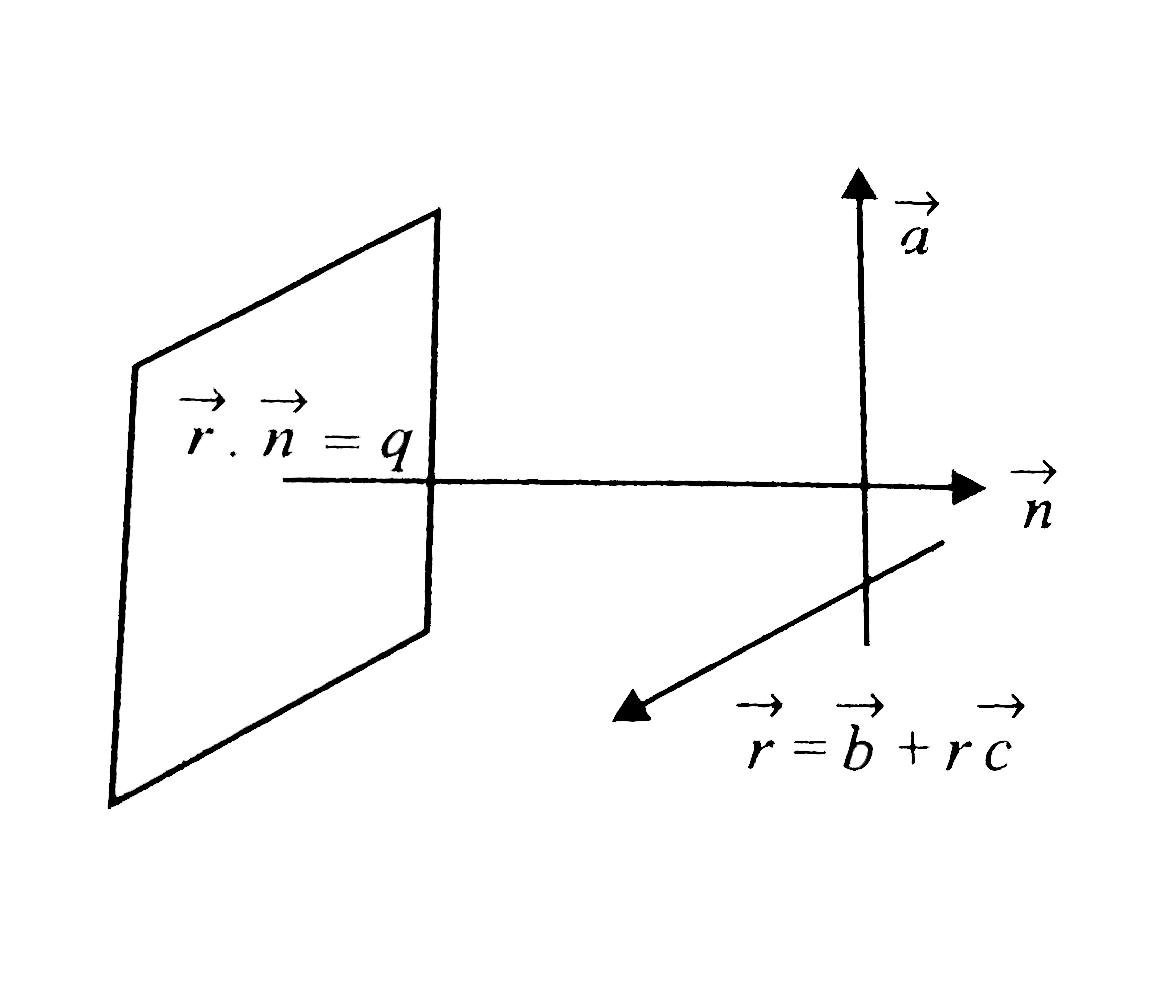The equation of the line throgh the point →a parallel to the plane →r.→n=q and perpendica––r→thel∈evecr=vecb+tveccis(A)vecr=veca+lamda (vecnxxvecc)(B)(vecr-veca)xx(vecnxxvecc)=0(C)vecr=vecb+lamda(vecnxxvecc) (D) none of these
→r=→a+λ(→n×→c)
(→r−→a)×(→n×→c)=0
→r=→b+λ(→n×→c)
none of these
The correct Answer is:a, d

Required line is parallel to →n×→c
The equation of line is →r=→a+λ(→n×→c)
or (→r−→a)=λ(→n×→c)
∴ (→r−→a)×(→n×→c)=0
Topper's Solved these Questions
- THREE-DIMENSIONAL GEOMETRY BOOK - CENGAGECHAPTER - THREE-DIMENSIONAL GEOMETRY EXERCISE - Exercise (Reasoning Questions)
10 Videos
- THREE-DIMENSIONAL GEOMETRY BOOK - CENGAGECHAPTER - THREE-DIMENSIONAL GEOMETRY EXERCISE - Exercise (Comprehension)
12 Videos
- THREE-DIMENSIONAL GEOMETRY BOOK - CENGAGECHAPTER - THREE-DIMENSIONAL GEOMETRY EXERCISE - Exercise (Single)
86 Videos
- THREE DIMENSIONAL GEOMETRYBOOK - CENGAGECHAPTER - THREE DIMENSIONAL GEOMETRYEXERCISE - Question Bank
20 Videos
- TRIGNOMETRIC RATIOS IDENTITIES AND TRIGNOMETRIC EQUATIONSBOOK - CENGAGECHAPTER - TRIGNOMETRIC RATIOS IDENTITIES AND TRIGNOMETRIC EQUATIONSEXERCISE - Question Bank
34 Videos
Similar Questions
The equation of the line of intersetion of the planes →r.→n=q,→r.→n'=q' and pasing through the point →a is (A) →r=→a+λ(→n−→n') (B) →r=→a+λ(→n×→n') (C) →r=→a+λ(→n+→n') (D) none of these
View SolutionFind the distance of the point →a from the plane →r⋅ˆn=d measured parallel to the line →r=→b+→tc.
View Solution
Knowledge Check
The equation of the plane containing the line →r=→a+k→b and perpendicular to the plane →r.→n=q is :
A(→r−→b).(→n×→a)=0B(→r−→a).{→nx(→a×→b)}=0C(→r−→a).(→n×→b)=0D(→r−→b).{→n×(→a×→b)}=0The plane →r⋅→n=q will contain the line →r=→a+λ→b if
A→b⋅→n≠0,→a⋅→n=qB→b⋅→n≠0,→a⋅→n≠qC→b⋅→n=0,→a⋅→n≠qD→b⋅→n=0,→a⋅→n=qThe vector equation of the plane passing through the origin and the line of intersection of the planes →r.→a=λand→r.→b=μ is
A→r.(λ→a−μ→b)=0B→r.(λ→b−μ→a)=0C→r.(λ→a+μ→b)=0D→r.(λ→b+μ→a)=0
A straighat line →r=→a+λ→b meets the plane →r.→n=p in the point whose position vector is (A) →a+(→a.ˆn→b.ˆn)→b (B) →a+(p−→a.ˆn→b.ˆn)→b (C) →a−(→a.ˆn→b.ˆn)→b (D) none of these
View SolutionFind the projection of the line →r=→a+t→b on the plane given by →r.→n=q.
View SolutionIf →a,→band→c are three mutually perpendicular unit vectors then (→r.→a)→a+(→r.→b)→b+(→r.→c)→c= (A) [→a→b→c]→r2 (B) →r (C) 2[→a→b→c] (D) none of these
View SolutionThe reflection of the point →a in the plane →r.→n=q is (A) →a+→q−→a.→n|→n| (B) →a+2(→q−→a.→n|→n|2)→n (C) →a+2(→q+→a.→n)|→n| (D) none of these
View SolutionThe equation of the plane which contains the origin and the line of intersectio of the plane →r.→a=d1 and →r.→b=d2 is
View Solution
